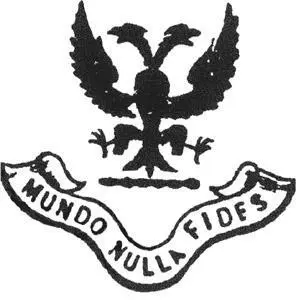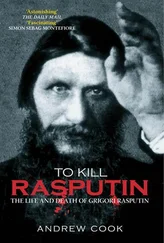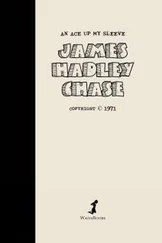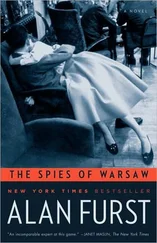This was no amateur racket. The counterfeiters had a contact inside the currency-printing firm of Bradbury and Wilkinson, and the contact obtained a plate that was copied by an engraver. The counterfeiters then carried out the printing themselves using their own ink and paper. Rosenblum’s name was not initially connected with the investigation. It emerged when attention turned to how the forged money was being shipped out of the country.
According to Ochrana records, Rosenblum had an interest in the Polysulphin Company, in Keynsham, Somerset. 94The factory produced a host of chemical products including soap, which it exported abroad. This was an ideal vehicle for smuggling money and indeed other commodities. Although the file itself is now incomplete, and therefore inconclusive, Polysulphin must be considered a prime suspect in terms of the counterfeiters’ distribution network.
In order to perpetrate such a scheme, an expert knowledge of printing inks would have been required. As a chemist with some experience in this line, Rosenblum may therefore have played a wider role outside that of mere distribution. Once Rosenblum’s role was uncovered, Melville would have had good grounds to fear that his connection with Scotland Yard might prove a severe embarrassment if discovered by Gredinger and the Ochrana. The safest thing all round would clearly be for Rosenblum’s planned departure to be brought forward post haste with Melville’s assistance. With his new passport and new identity, Rosenblum and his wife were thus able to leave the country, and head for probably the last place the Ochrana would think of looking for them – Russia. It would not be the first, or indeed the last time that he would disappear just as the net was tightening around him. 95

The coat of arms on Rosenblum’s letter-head incorporated the double-headed Russian eagle and shamelessly appropriated the Thomas family motto ‘no faith in the world’.
Leaving London behind, Margaret and Sidney Reilly proceeded to Russia in June 1899 where they remained until the autumn of the following year. During the summer of 1900, Reilly travelled around the oil-rich Caucasus, visiting the ports of Petrovsk and Baku while Margaret remained in St Petersburg. It is noteworthy that during these months, War Office records note that: ‘Mr Stevens (at the British Consulate in Baku) has an agent who travels between Petrovsk, Baku and along the T.C. Railway and reports to Stevens by word of mouth’. 1
Whatever the nature of the information being supplied, it would appear that it was of sufficient interest to warrant payment being made to the informant. The scenario certainly fits Reilly’s ‘modus operandi’, although there is no positive proof that the informant was actually Reilly.
In September 1900, the Reillys made their way to Constantinople and took a ship to Port Said in Egypt. Here the SS Rome departed for Colombo, where they again changed ships for the final stage of their journey to Shanghai via Penang, Singapore and Hong Kong. After several months in Shanghai, they proceeded to Manchuria, arriving in Port Arthur during the early months of 1901. 2
Life in Port Arthur was not only primitive by comparison to the one they had led in England and Russia, it was also at the very epicentre of a simmering regional conflict of interest between Russia and Japan, which before too long would break out into open hostility. Located at the tip of the Liaotung peninsula, the port held great strategic significance, due to its commanding position on the Gulf of Chihli, which gave access to the Chinese capital of Peking. In 1898 the Chinese had, by way of a lease, conceded the peninsula to the Russians, with the greatest of reluctance and much to the chagrin of the Japanese. The Russians had renamed the Port of Lushun Port Arthur and made it the base for their Pacific fleet. The harbour was, without doubt, the perfect defensive location, shielded by ‘the tiger’s tail’, a natural deep-lying peninsula. This natural fortification was further reinforced by what was reputedly the strongest fortress in China.
To the Japanese, Port Arthur was a token of Russia’s desire for naval supremacy in the region, an aspiration that they, as an emerging naval power themselves, could not countenance. On the economic front, the two powers were equally at loggerheads in that they were both competing for the same unexploited natural resources in Manchuria and Korea. In the same way that Japan saw Russia’s annexation of the Liaotung peninsula as an ominous sign in the military and naval sphere, the continued expansion of Russia’s railway empire into Manchuria raised economic danger signals for the Japanese. While trying to contain Russian expansion by diplomacy, the Japanese were at the same time preparing for the contingency of war.
Reilly entered this cauldron of intrigue determined to make the most of the business opportunities that beckoned. At first sight, his reported activities in Port Arthur seem to have little or no logical connection. Records, for example, indicate his involvement in lumber trading, real-estate speculation and shipping. Closer inspection, however, reveals that all these ventures were effectively linked by the mutual involvement of one Moisei Akimovich Ginsburg.
Ginsburg, born on 5 December 1851 in Radzivilov in the Ukraine, had long-standing associations with the Rosenblum family. His early life was quite typical of any Jew in the Russian Empire. Born into poverty, he started work at the age of eleven by writing out labels at the local customs house. At fifteen he went to the seaport of Odessa from where he proceeded to Germany, England and America. Having saved $90 working in San Francisco, he bought a third-class ticket for a ship heading for China. On the way the ship docked at the Japanese port of Yokohama, where Ginsburg took an immediate liking to Japan and decided to stay there. By 1877 he had set up his own trading company in Yokohama supplying ships sailing in Japanese waters. He soon gained a reputation as ‘the only Russian in Japan who knew perfectly the local conditions’. 3The Russian Pacific fleet, then based at the port of Vladivostok, was only in its early stages of development and its facilities struggled to supply the fleet with even the barest of essentials. Ginsburg therefore stepped in and within a few short years had become indispensable to the Russian navy.
Duke Kirill Vladimirovich, who raised the Russian tricolour over Port Arthur in 1898, recalled Ginsburg as a ‘benefactor on whom the entire Pacific navy dpended… everything – from a pin to an anchor, and from rivets to a smoke stack – we got everything from Ginsburg’. 4It was here, at the new base of the Russian Pacific fleet, that M. Ginsburg & Co. set up its new head office on Port Arthur’s main thoroughfare. The import-export company now had branches in Nagasaki, Yokohama, Chemulpo, Odessa and Singapore, and an annual turnover of over 1 million roubles.
With his flair for languages and business, Reilly was seen as a distinct asset when he joined the staff of Ginsburg & Co., where he worked initially under G.M. Gandelman, Ginsburg’s office manager. 5In addition to ‘direct’ trading, the company also acted as agents for other enterprises such as the East-Asiatic Company, a steamship line with branches in Odessa, St Petersburg and Copenhagen. Reilly was charged by Ginsburg to deal directly with all the line’s business and in this connection Reilly attended a major trade conference on behalf of the company in February 1902. 6Reilly’s responsibilities as representative for both companies thus explains why East-Asiatic’s business address in Port Arthur is the same as that of Ginsburg & Co. 7Also trading from the same address was ‘Grunberg & Reilly’, which along with the American firm Clarkson & Company was the main importer of American lumber. 8Reilly’s business partner in the lumber business, V. Grunburg, was, according to East-Asiatic records, also a representative of the naval steamship company and the Chinese East railway. 9
Читать дальше













